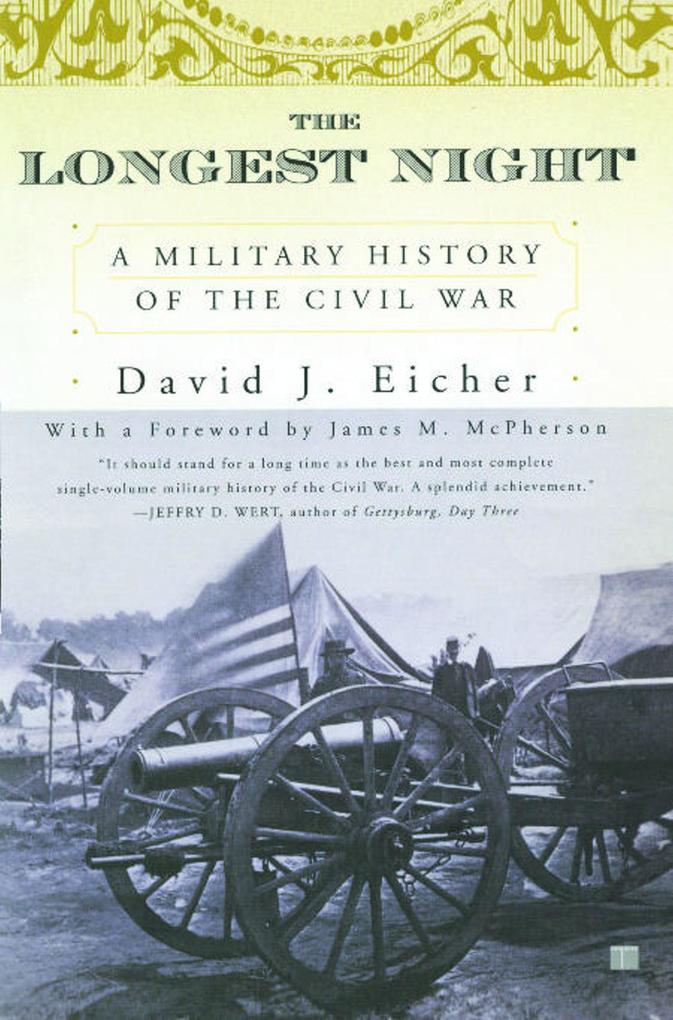In this compelling new account of the American Civil War, noted historian David Eicher gives us an authoritative history of battle from the first shots at Fort Sumter to Lee's surrender at Appomattox. As a strictly military history, "The Longest Night" covers hundreds of engagements, both well known and obscure, including the oft-neglected Western theater and naval actions along the coasts and rivers. The result is a gripping popular history that will fascinate anyone just learning about the Civil War while offering more than a few surprises for longtime students.Drawing on hundreds of sources and excerpts from correspondence by those who fought the war, "The Longest Night" conveys a real sense of life -- and death -- on the battlefield. In addition, Eicher analyzes each side's evolving strategy; examines the tactics of Lee, Grant, Johnston, and Sherman; and discusses significant topics such as prisons, railroads, shipbuilding, clandestine operations, and the role of African-Americans in the war. This is an indispensable chronicle of the war that James M. McPherson, in the Foreword, calls "the most dramatic, violent, and fateful experience in American history."
Inhaltsverzeichnis
Contents
List of Maps
Foreword by James M. McPherson
Introduction
Prologue: 1915
The War Begins at Sumter
Organizing the Struggle
Southern Joy over First Bull Run
A Massacre at Ball's Bluff
An Unlikely Hero at Belmont
Grant Moves into Tennessee
Clash of the Ironclads
A Bloodbath at Shiloh
Jackson's Valley Campaign
The Peninsular Campaign
Confederate Triumph at Second Bull Run
The War's Bloodiest Day
Fredericksburg's Appalling Loss
Stalemate at Stones River
The Campaign for Vicksburg
Lee's Master Stroke
Three Days at Gettysburg
Visiting the River of Death
The Battles for Chattanooga
Sherman Eyes the Deep South
The Red River Campaign
Grant Moves into the Wilderness
Action at Atlanta and Petersburg
Sheridan Raids the Valley
Sherman's March to the Sea
Fall of the Last Confederate Port
Lee's Army Crumbles
The End of the Civil War
Epilogue: 1865
Acknowledgments
Notes
Bibliography
Index


































